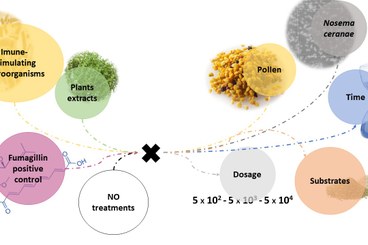
PROJECT RESULTS
This page summarizes the results achieved by the project, in terms of scientific publications and patents
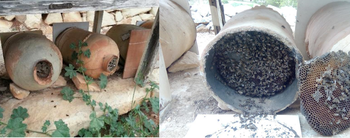
Environment or genetic isolation? An atypical intestinal microbiota in the Maltese honeybee Apis mellifera spp. ruttneri
Apis mellifera evolved mainly in African, Asian, and European continents over thousands of years, leading to the selection of a considerable number of honey bees subspecies that have adapted to various environments such as hot semi-desert zones and cold temperate zones. With the evolution of honey bee subspecies, it is possible that environmental conditions, food sources, and microbial communities typical of the colonized areas have shaped the honey bee gut microbiota.
The link at the open access publication:
https://doi.org/10.3389/fmicb.2023.1127717
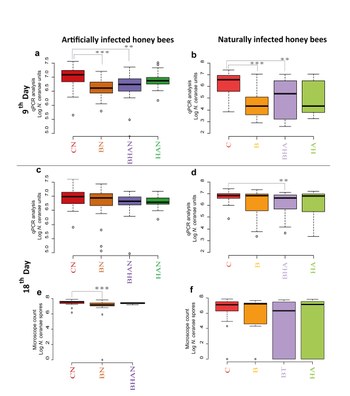
Beneficial Bacteria and Plant Extracts Promote Honey Bee Health and Reduce Nosema ceranae Infection
This work aims to explore an innovative approach to counteract N. ceranae proliferation in the honey bee gut, using an already developed bacterial mixture and a plant extract blend possessing antifungal activity. The study considers different variables including natural and artificial N. ceranae infections, different concentrations of the infective inoculum, administration of single or multiple microbial strains, the bacterial mixture and the plant extract blend administered alone or combined together, as well as beebread absence in the diet. Laboratory studies were followed by in-field testing. The analysis of the efficacy of the proposed treatments, besides the definition of a strategy to counteract N. ceranae, will contribute to enlarge the knowledge on the parameters involved in the biological response of Apis mellifera to the administration of bacterial strains at laboratory and field levels.
The link at the full open access publication:
https://doi.org/10.1007/s12602-022-10025-7
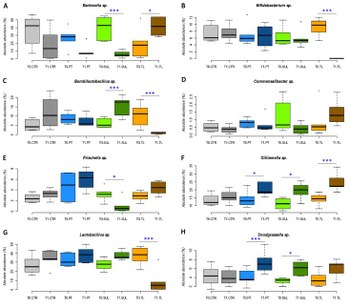
The impact of antibitics on the core microbiome of hobeybees, few insights.
How is the gut microbiota of the honeybee disrupted following the administration of antibiotics such as Tylosi, Tetracycline and Sulphonamides? And which environmental microorganisms occupy the ecological niches left uncovered by the core microbiota?
The full open-access article: https://journals.asm.org/doi/pdf/10.1128/Spectrum.00176-21
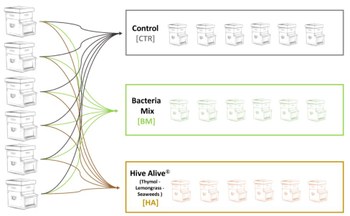
How do microbial mixtures and thymol impact the hoenybee microbiota?
Nowadays more and more preparations based on microorganisms or plant extracts are tested on honeybees with the specific aim of determining their immuno-stimulating capacity or curative action. They are alternatives to antibiotic drugs, and considered ecofriendly. However, how do they affect the gut microbiota of the honeybee? are they really sustainable? Here we offer insights about bacteria mixtures of Bifidobacteriaceae and a famous plant extract in the beekeeping sector: thymol.
The full open access article:
https://www.mdpi.com/2076-2607/9/5/1009

Nosema ceranae, which active ingredients are working?
This research is the first of a series. A long screening of different active ingredients, from the most disparate sources, to counter Nosema ceranae. Sometimes we have obtained satisfactory results, other times disappointing results. However, this research represents a first step in the control of infectious bee diseases
The full open-access article: https://www.mdpi.com/2076-0817/10/9/1117/htm
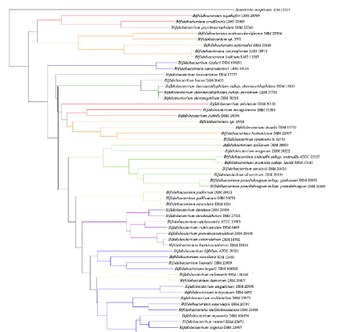
What microbial diversity in pollinator insects?
The intestine of insects constitutes an ecological niche yet to be discovered. this publication is a perfect example of the microbial resources that can still be discovered and exploited.
The full open-access article:
https://cris.unibo.it/[…]/Alberoni%20et%20al_2018_postprint.pdf